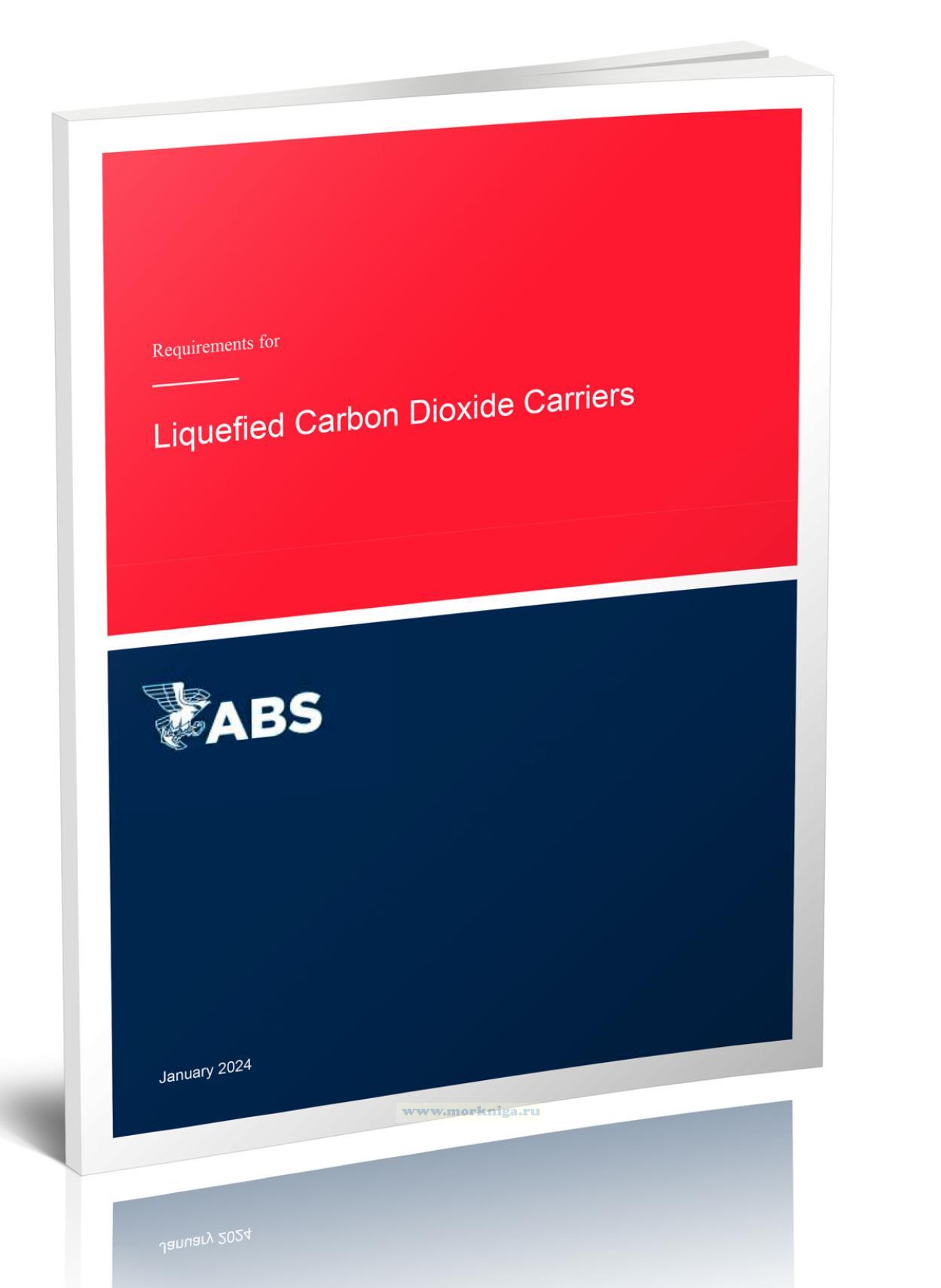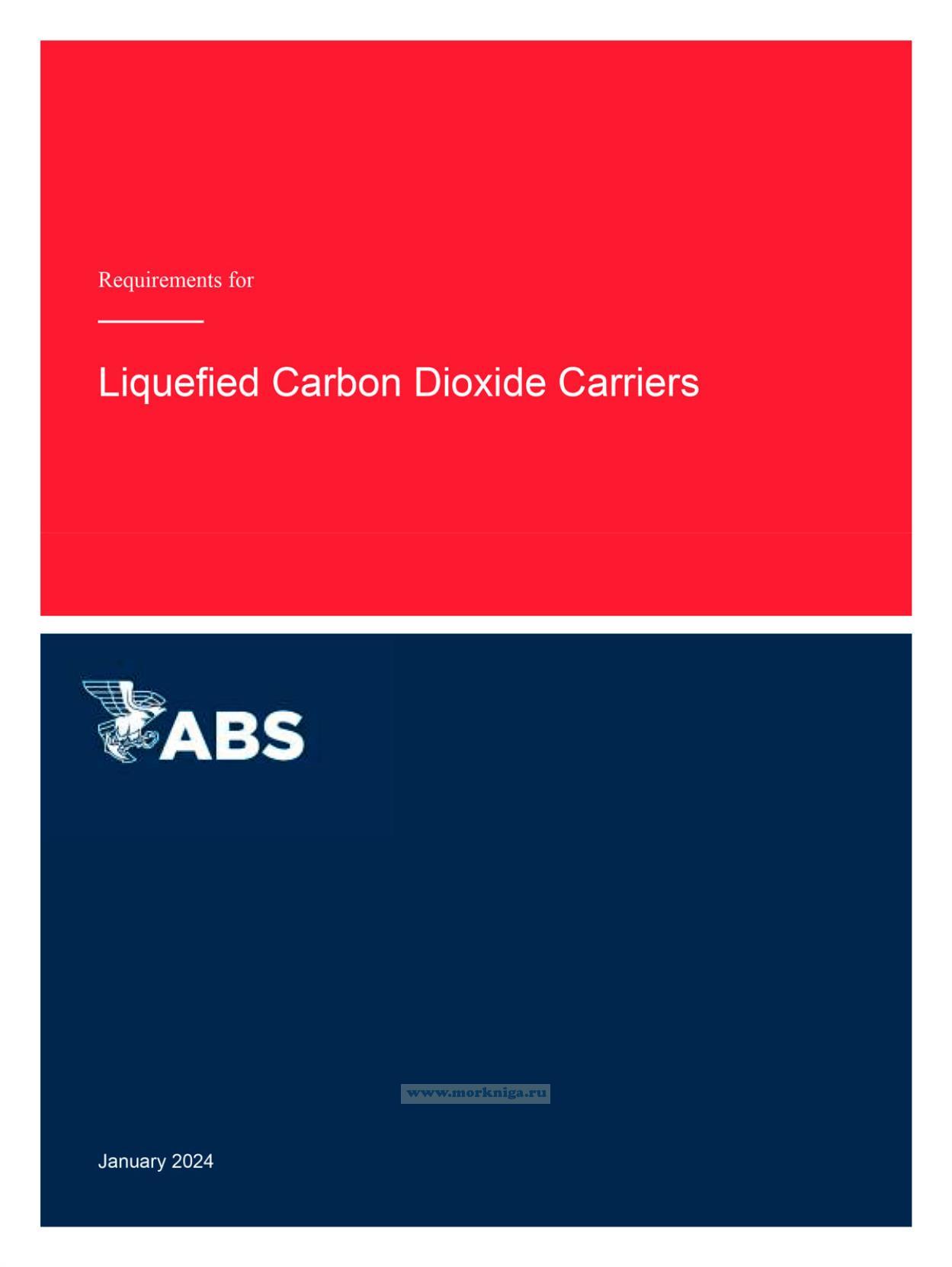Requirements for Liquefied Carbon Dioxide Carriers/Требования к перевозчикам сжиженного диоксида углерода
Книга на английском языке
The International Maritime Organization (IMO) has set a goal on Green House Gas Emissions from Ships to reduce the CO, emissions per transport work, at an average across international shipping by at least 40% by 2030 when compared to 2008. When compared to 2008. the total annual GHG emissions from international shipping are expected to decrease by at least 20%. aiming for 30% by 2030 and at least 70%. aiming for 80% by 2040. With an increasing interest in reducing GHG emissions, global industries are looking for ways to reduce their carbon emissions either by using alternate clean fuels or low carbon fuels with carbon capture and storage technologies. As more industries adopt carbon capture and storage strategies, the amount of CO, captured will be more than is currently used. This surplus CO, must be transported to be stored underground in geological formations or utilized in new consumption pathways. Currently, captured carbon dioxide (C'02) is primarily transported either by pipelines or ships. This has led to an increased demand for dedicated liquefied CO, earners.
The ABS Rules for Building and Classing Marine Vessels (Marine Vessel Rules) Part 5C. Chapter 8 has incorporated the International Code for the Construction and the Equipment of Ships Carrying Liquefied Gases in Bulk (IGC Code) along with the ABS requirements that apply to Vessels Intended to Cany Liquefied Cargoes in Bulk. This document outlines requirements for building and classing liquefied CO, carriers where liquefied CO, is carried as a cargo in Type C independent tanks.
For requirements applicable to onboard carbon capture technologies, refer to the requirements in ABS
Requirements for Onboard Carbon Capture and Storage.
Contents
Section 1 General
Classification Notations
Application
Use Of Low-Flash Point Fuels
Reference
General
Section 2 Ship Survival Capability And Location Of Cargo Tanks
1 General
Section 3 Ship Arrangements
1 General
Section 4 Cargo Containment
1 General
Section 5 Process Pressure Vessels And Liquid, Vapour, And Pressure Piping Systems
1 General
Section 6 Material Of Construction And Quality Control
1 General
1.1 Applicability
1.2 Material Thickness, Testing And Heat Treatment
1.3 Yield Stress Limitation
1.4 Corrosion Considerations
Section 7 Cargo Pressure/Temperature Control
1 General
Section 8 Vent System For Cargo Containment
1 General
Section 9 Cargo Containment System Atmosphere Control
1 General
Section 10 Electrical Installations
1 General
Section 11 Fire Protection And Extinction
1 General
Section 12 Artificial Ventilation In The Cargo Area
1 General
Section 13 Instrumentation And Automation System
1 General
Section 14 Personnel Protection
1 General
Section 15 Filling Limits For Cargo Tanks
1 General
Section 16 Reliquefaction System
1 General
Section 17 Special Requirements
1 General
Section 18 Operating Requirements
1 General
Table 1 ESD Functional Arrangements
Section 19 Survey Requirements
1 General
2 Survey During Construction
2.1 Surveys At Manufacturer’s Facility
2.2 Equipment Survey
2.3 Surveys During Installation
2.4 Surveys During Trials
2.5 Initial Testing Of Cargo System
3 Survey After Construction

